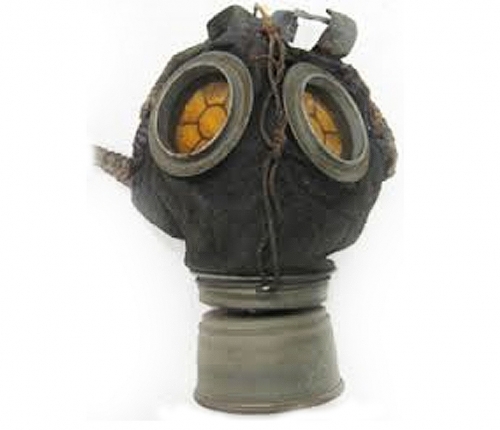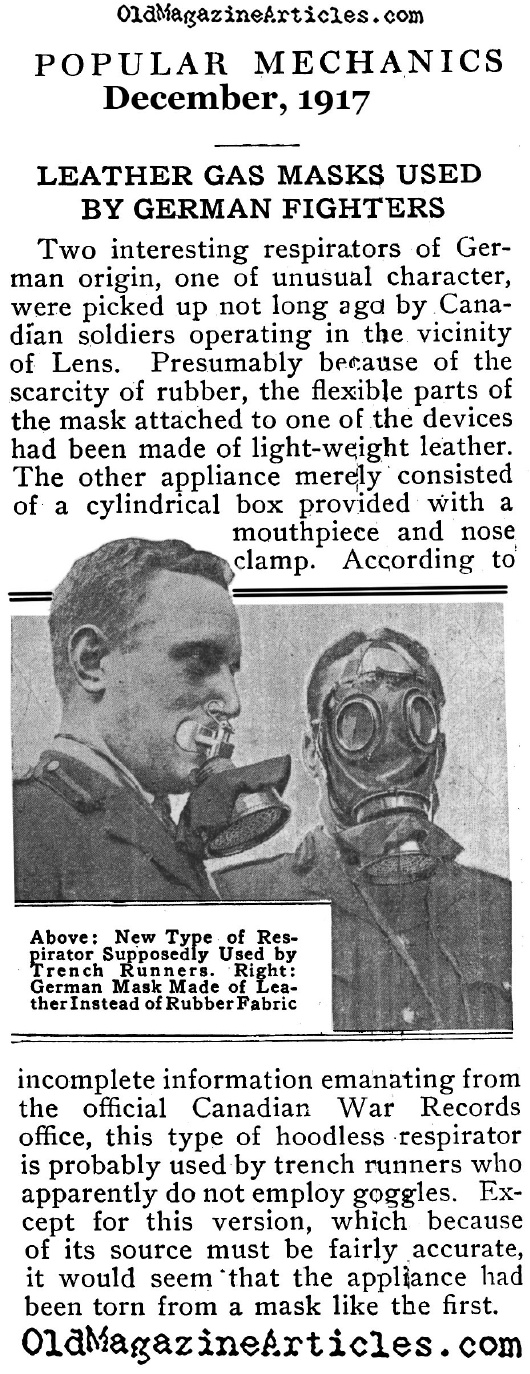During June of 1917, the German Army introduced the “Lederschutzmasken”, a leather gas mask made of specially treated Bavarian sheepskin with removable lenses. Designed to replace the rubberized cloth gas masks, the 1917 respirators proved to be far more effective against phosgene gas than the 1915 masks. The Allied powers dismissed the new design as evidence that material shortages on the German home front were forcing changes.
Click here to read about the celebrations that took place in Paris the day World War One ended.
KEY WORDS: 1917 german leather gas mask,ww1 german leather gas mask information,1917 article concerning german leather gas masks,late war German leather gas mask 1917,WW1 German supply shortages created leather gas masks,WW1 lack of rubber created the need for leather German gas masks,WW1 rubber shortage created the need for leather German gas masks








































